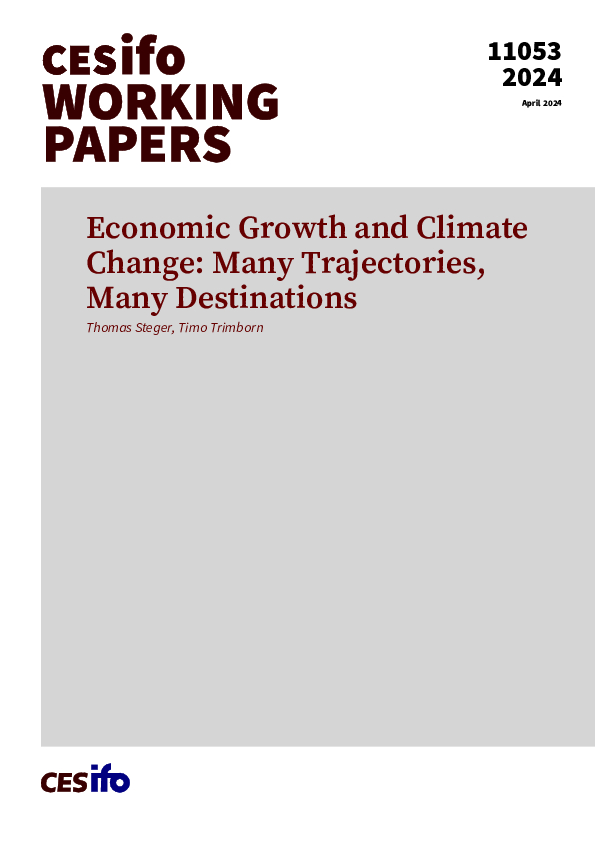Economic Growth and Climate Change: Many Trajectories, Many Destinations
CESifo, Munich, 2024
CESifo Working Paper No. 11053

To gain insights into the mechanisms that shape the interaction between economic growth and climate change, we analyze the simplified DICE through the lens of growth theory. We analytically show that this model exhibits a continuum of saddle-point stable steady states, a property that carries over to a large set of (analytical and numerical) IAMs. This novel insight is important because it implies initial conditions of stock variables, notoriously difficult to calibrate, matter for the ultimate steady state, i.e. for the long-run economic and climate outcomes. However, we also show that a lack of information about the stock of global capital is considerably less consequential than a lack of information about GHG in the atmosphere. These properties have important implications for understanding the consequences of delayed climate policy implementation and the optimal carbon tax. We employ numerical techniques to show how a postponement of optimal climate policy implementation leads to a higher long-run temperature. We also show that the SCC-to-GDP ratio is in fact largely constant, despite transitional dynamics. However, its level depends strongly on the point in time the policy is implemented. Finally, we employ the setup to better understand the consequences of stronger TFP growth for the climate.
Fiscal Policy, Macroeconomics and Growth
Energy and Climate Economics